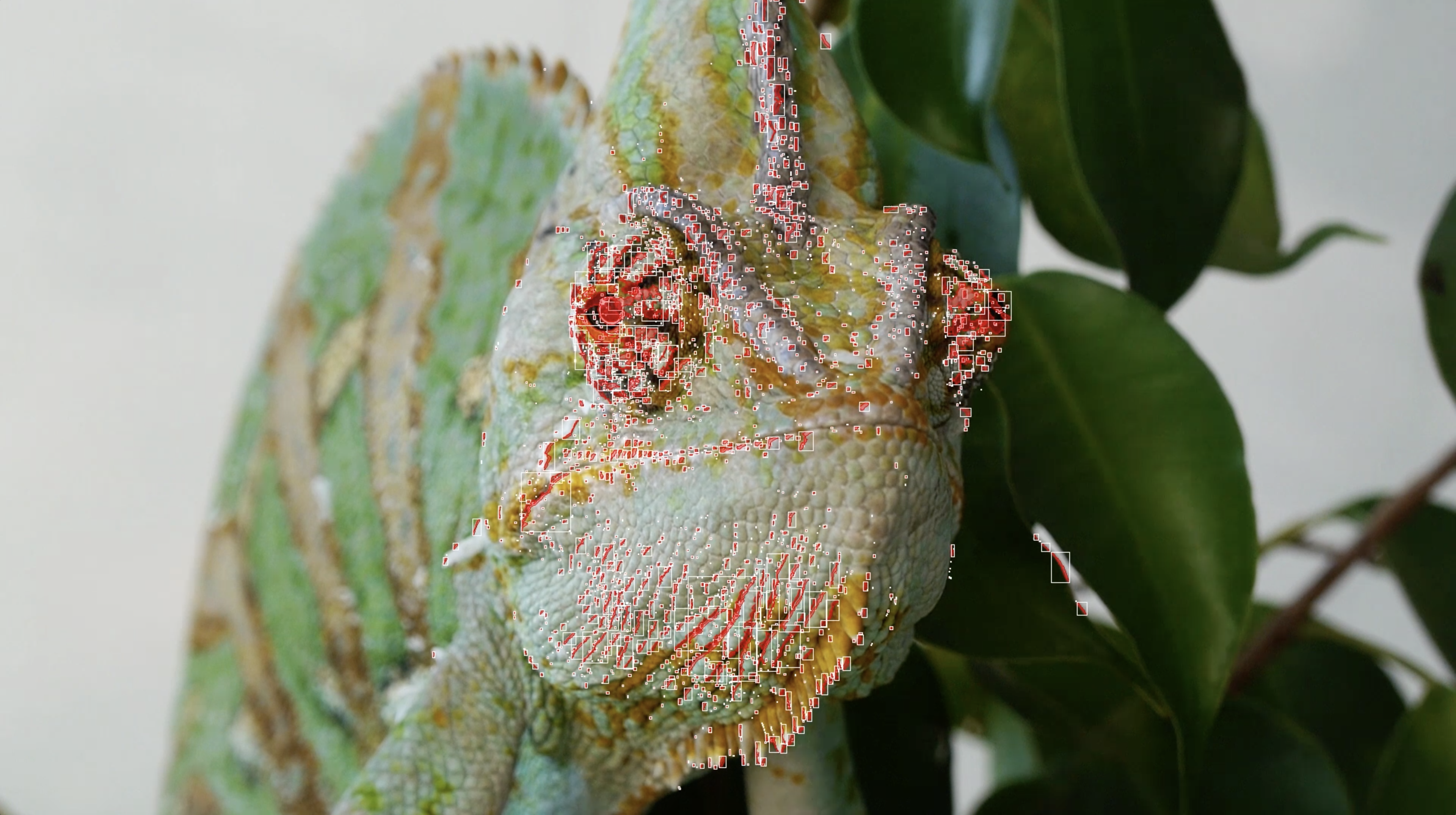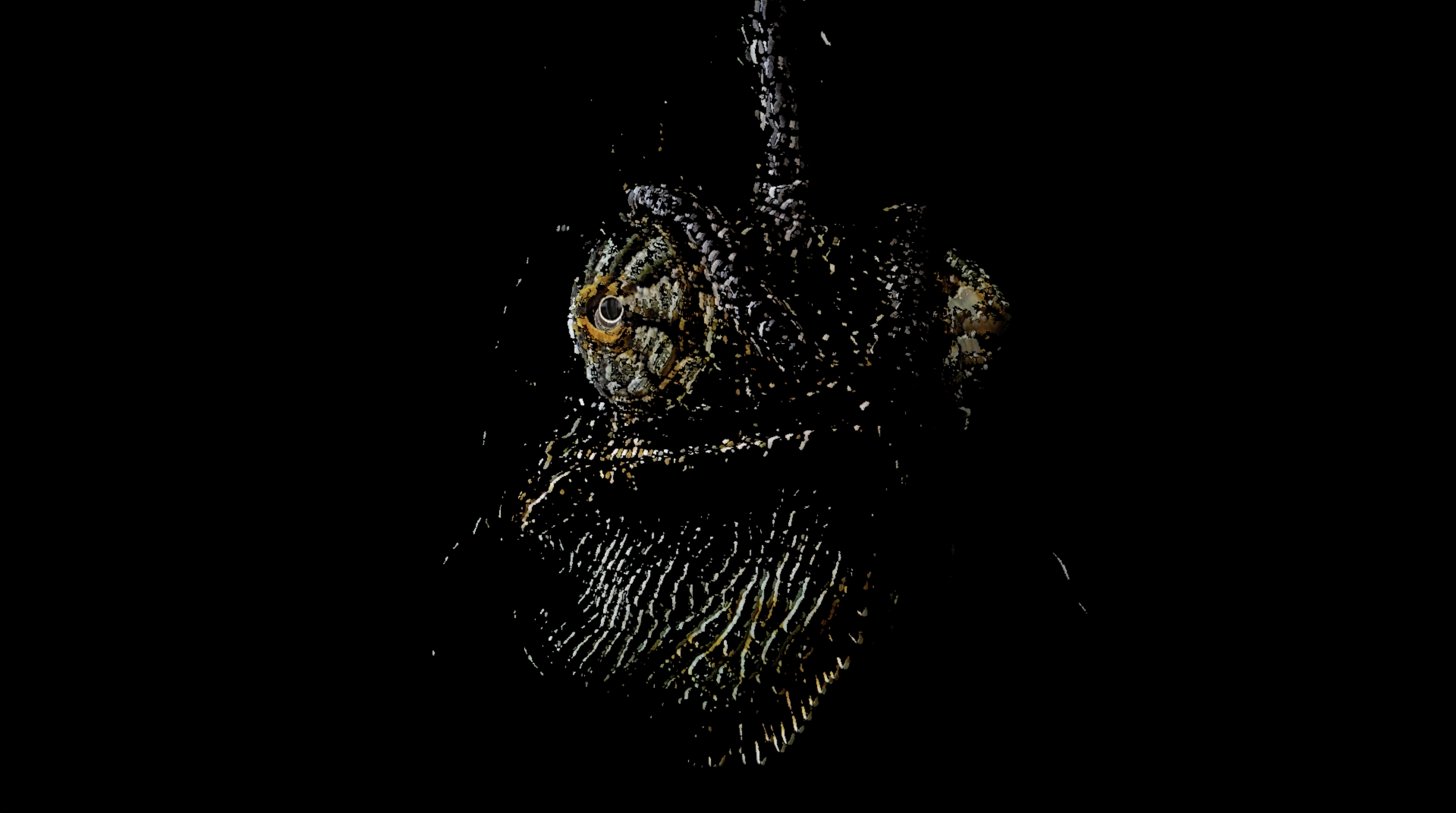AUTOMATA II
Automata II continues the research of looking into
techniques of machine vision established in Automata I. This iteration looks
into an open source computer vision library, OpenCV that is used infacial
recognition and surveillance cameras. By applying the same cellular automata
logic from Automata I the visualization shows how image filters algorithmically reduce the
complexity of an image, creating a different reading of the
image to compute on, in this case to detect motion. This defines the technique
called background subtraction.
In this piece, a recording of a chameleon is used to denote localized and subtle forms of movement, which in turn are captured by an algorithmic process that can only perceive motion. The chameleon’s stillness operates as a mechanism of camouflage, in this case from a computer process that is only able to process the variation of pixels over time.
In this piece, a recording of a chameleon is used to denote localized and subtle forms of movement, which in turn are captured by an algorithmic process that can only perceive motion. The chameleon’s stillness operates as a mechanism of camouflage, in this case from a computer process that is only able to process the variation of pixels over time.
Whilst the first video shows the algorithm’s method of blob-detection for movement, this second pass removes the background and prints only the detected motion, in terms of pixels that have changed between frames, rendering the chameleon’s stillness as a form of algorithmic camouflage, and it motion as revealing itself to the algorithm.

A visualization of a surveillance camera’s gaze of an urban scene, through OpenCV’s blob detection
algorithm.

